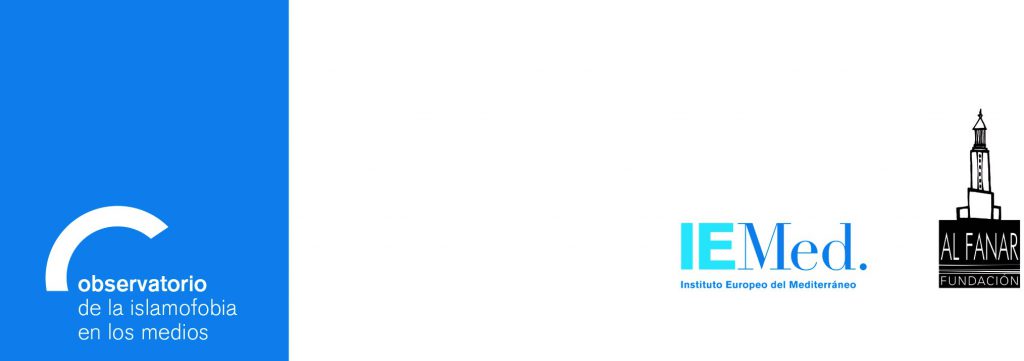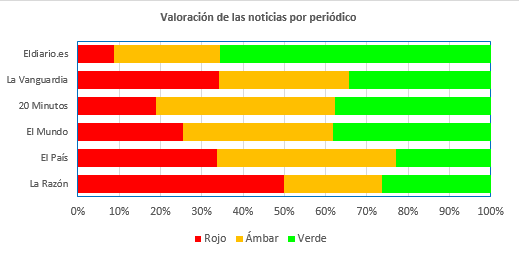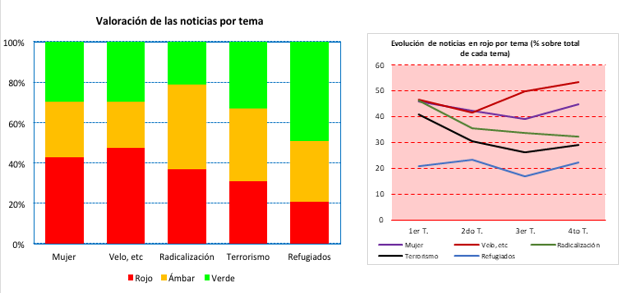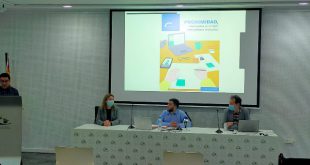
The Undeniable Reality: Islamophobia in Media
(Executive Summary)
What is the Observatory of Islamophobia in Media?
The Observatory of islamophobia in Media is an initiative of the European Institute of the Mediterranean (IEMed) and Fundación Al Fanar para el Conocimiento Árabe, with the support of The Three Cultures Foundation, Casa Árabe and Fundación Euroárabe, with the latest adherence in 2018 of Campus Excelencia Mare Nostrum (Murcia University). Instead of aiming at criticizing or attacking media, the Observatory is conceived as a positive and proactive tool contributing to depict a diverse society and raise awareness of islamophobia as a form of discrimination.
Methodology
During 2017 more than 1600 articles have been examined coming from six different Spanish newspapers: El País, El Mundo, La Razón, La Vanguardia, eldiario.es and 20 minutos. News articles undergo a process of quantitative and qualitative analysis after which they are classified according to their degree of islamophobia, i.e. they are given a colour from the “islamophobia traffic lights”: red for “active islamophobia”, yellow for “passive islamophobia” and green for “no islamophobia”.
All details regarding methodology are available on the website and report.
Worst practices
- Sensationalist headlines
- Exaggerated and unfounded use of figures (false scientism)
- Misuse and/or abuse of vocabulary belonging to the Islamic doctrine
- Lack of sources, links and data to verify the sustained thesis
- Ignorance of the Spanish demography and tendency to label as foreigners Spanish Muslim nationals and/or settled in Spain
- Demonization of Islamic religion
- Mentions to Islam as a military ideology
- De-legitimizing legitimate demands of Muslim communities as ‘capricious impositions’
- Sexist portrait of Muslims
- Instrumentalisation of LGBTI communities (homonationalism)
- Generalizations which stigmatize Muslim (or seen as such) minors, women and men
- Emphasis on a ‘clash of religions’
- Denial of mere existence of islamophobia
- Instrumentalisation of Islam to deal with all sorts of non-related topics.
Results
- The majority of articles on Islam and/or Muslins are islamophobic: 60% of news articles in 2017 are islamophobic (either passively or actively).
- Opinion is more islamophobic than information: 72% of op-ed articles are islamophobic.
- Islam is associated to negative elements: 90% of news articles on Islam and/or Muslims refer to negative phenomena.
- The issue of terrorism dominates information on Islam: 1150 articles out of 1659 deal with terrorism.
- Gender islamophobia is flagrant: more than 65% of all news articles on Muslim women or the veil are islamophobic.

Classification of news articles per newspaper
- La Razón, the best pupil: amongst the diverse media outlets analyzed, La Razón has shown most improvement during 2017, being also the media outlet that started with worse islamophobia rates of all. As an average, 50% of news articles on Islam published in La Razón in 2017 are actively islamophobic (red) while 25% of them stand out as passively islamophobic (yellow).
- 80% of news articles in El País on Islam and/or Muslims are islamophobic, although in this case “yellow” news articles predominate.
- 66% of news articles of es regarding Islam and/or Muslims received a green grading (no islamophobia).
- After the 17-A attacks in Barcelona and Cambrils, a certain containment regarding information is noticed and, in fact, the percentage of islamophobia declines.
- There is a visible improvement in the narrative regarding refugees. Almost 60% of articles on them deal with the issue positively and show less islamophobic opinions.

| Recommendations
Following the Observatory’s vocation of positive collaboration with media, the following recommendations have been included in the Report:
– Avoid sensationalism and generalisations – End with the inappropriate references to religion, ethnicity or culture – Pay attention to the choice of headline and images – Give voice to Muslims who stand on their own merits and not because of their religion – Grant visibility to feminism within Muslim populations – Double-check information with reliable and balanced sources – Call out parties or politicians who feed on islamophobia to gain votes – Use appropriate and unbiased terminology |

 Observatorio Islamofobia Por un periodismo inclusivo frente a la islamofobia
Observatorio Islamofobia Por un periodismo inclusivo frente a la islamofobia




